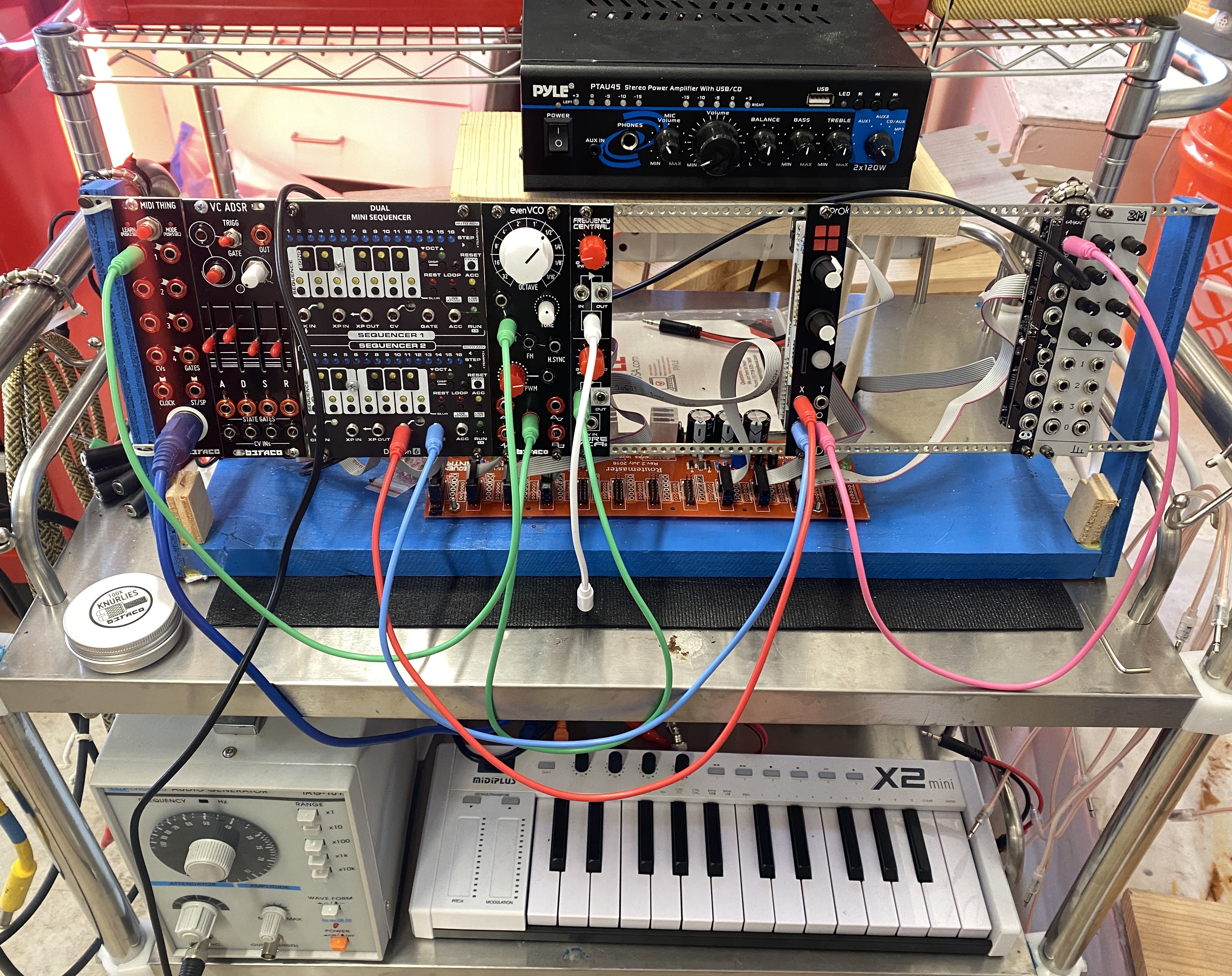Hi all,
I've had some exposure to analog synths (1980s-90s), trackers with samples (90s), then took a break and restarted a year ago with a wavetable synth (Argon8x) and several soft synths in Logic (e.g. Sculpture). Because most of this was slow, plodding development of tunes in a DAW or other editor, I'm looking to break it all open and enjoy the unbridled live madness of modular.
I've added a bunch of 2HP oscillators because they take little space, yet seem quite capable. For noise, I went with something a little more flexible. Then there's LFO/EG and some effects. Finally, the Erica Black stereo mixer with PFL so I can hear first, then mix in. Planning on getting some patch-through cables to split the signal into stereo for the mixer.
Hi Arrandan,
have you ever seen an actual eurorack module? you do know that 1hp = 1/5" - 2hp is tiny and the trimmers that they use are not very precise - tuning can be a pain because of this
also putting them next to each other will make them practically unusable...
I'm planning to use this setup with a Torso T-1. I thought I'd need the Bastl 1983 for that, but it seems there's more CV connectivity than I thought. So I guess that one can go. Saves me a pretty penny and 7HP.
I'd like to use this mounted into my racks in my home studio, yet take it out into a portable box when playing elsewhere. Is that doable?
theoretically - but I wouldn't start like that - I'd start with a mantis - yeah it's more expensive - but it will give you the ability to expand and it has significantly better power supply than the b-company - and won't fit in your 19" rack... but it is portable and is probably the best case for starters (hp/cost/quality of power/reputable company)
otherwise you'll be buying more racks in the near future as you realize that you need more modules to do anything interesting and have replaced your 2hp vcos with modules that you can actually play and enjoy using
I wanted to add the JPG here, but it seems like ModularGrid updates that infrequently. So here's the link straight to the rack config.
StarterKit on ModularGrid
-- Arrandan
good you didn't - they're crap for getting help - the link is 1000* better!
ok so you have 3 vcos, but nothing to mix them before hitting the 2 filters - it's kind of a typical subtractive synth concept to mix the 2 identical ones (slightly detuned) - needs a sub-mixer...
all your sound sources and sound modifiers are mono, but your end of chain mixer is expecting stereo inputs - needs a way of panning mono into a stereo field...
sorry to be the bearer of bad news, but if you go and buy this I think you will be seriously disappointed with what you can do with it - at least without buying quite a few more modules & more rack space
I suggest doing a lot more research into modular synthesis - read a good 10-20 newbie threads, of which there are a lot here and then create a new rack which might actually work....
there's a couple of hints in my signature...
"some of the best base-level info to remember can be found in Jim's sigfile" @Lugia
Utility modules are the dull polish that makes the shiny modules actually shine!!!
sound sources < sound modifiers < modulation sources < utilities



